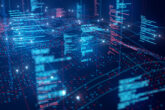February 22, 2022
Why Digital Assets are Poised to Disrupt Philanthropy
Digital asset donations are poised to disrupt — and even transform — philanthropic giving this year. Though there has been much speculation about the viability of cryptocurrency and their use across sectors, charitable organizations such as St. Jude’s Children’s Research Hospital, American Cancer Society, the Jewish National Fund, World Vision and United Way Worldwide now accept Bitcoin and other cryptocurrencies as donations.
In 2020, such donations totaled just US$4.2 million. Crypto giving rose more than 10-fold to $69.6 million in 2021, and this steep trajectory that will likely continue in 2022 suggests a new era of digital asset philanthropy. Charity auctions featuring non-fungible tokens in the last two years have highlighted the fact that NFTs and digital currencies have more utility than trendy headlines. These new technologies can be used as a force for good, and their uptake by influential non-profit organizations will accelerate their acceptance in this sector. Just as digital technology is disrupting traditional methods of stock investing and buying artwork by allowing access by a wider audience, crypto donations provide a tremendous opportunity for charitable organizations.
Nonprofit organizations are naturally risk-averse. But as the digital asset ecosystem matures, many more of them are likely to conclude that they can’t afford not to include clear channels for cryptocurrency donations.
Artwork, access to financial institutions, and charitable giving are only a few of the many opportunities that will be disrupted in this transition to digital currencies. Auctions traditionally serve only a tiny fraction of potentially interested parties. But thanks to the increasing popularity of digital assets like NFTs, online auctions can now attract the attention of millions of previously excluded people and guarantee secure transfer of the auctioned product following purchase. While formidable challenges remain, we see two substantial incentives.
Read the full article and more from Forkast.
More from CNAS
-
No Grid, No Glory: What History Teaches Us About the Next Major War
This article was originally published on The National Interest.The Trump Administration’s new National Security Strategy goes to great lengths to do what every good strategist...
By Will Rogers
-
Breaking the Rare Earths Dependency with Chris Kennedy
Geoff sits down with Chris Kennedy to unpack the Trump administration’s National Security Strategy and debate what it will take for the United States to overcome its dependenc...
By Geoffrey Gertz, Emily Kilcrease & Chris Kennedy
-
Energy, Economics & Security / Technology & National Security
Recommendations for Promoting American AI AbroadStrategic Context and Program Objectives The American AI Exports Program is an ambitious and essential proposal to expand the reach of American AI technologies in foreign mar...
By Janet Egan, Geoffrey Gertz, Daniel Remler & Ruby Scanlon
-
Rational Security: The “Adverse Possession” Edition
This week, Scott sat down with Lawfare Managing Editor Tyler McBrien and Contributing Editor and CNAS adjunct senior fellow Alex Zerden to talk through a few of the week’s big...
By Alex Zerden




